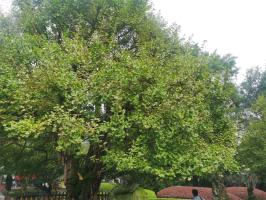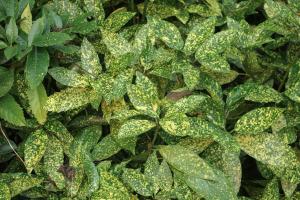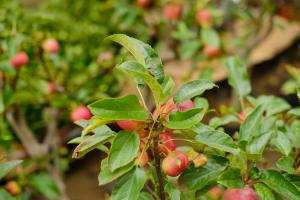A Plant Making Glucose from Carbon Dioxide and Water
Plant photosynthesis is the process by which light energy is converted into chemical energy in the form of organic compounds, primarily sugars. The raw materials required for photosynthesis are carbon dioxide and water. This article aims to explain how plants use these raw materials to produce glucose, the main source of energy for all living organisms.
The Process of Photosynthesis
The process of photosynthesis can be divided into two main stages: the light-dependent reactions and the light-independent reactions.
During the light-dependent reactions, light energy is absorbed by chlorophyll pigments in the chloroplasts of plant cells. This energy is then used to split water molecules into oxygen gas and hydrogen ions, which are used to form ATP (adenosine triphosphate) and NADPH (nicotinamide adenine dinucleotide phosphate).
The light-independent reactions, also known as the Calvin cycle, use the ATP and NADPH produced during the light-dependent reactions to fix carbon dioxide particles into organic compounds, primarily glucose. These reactions take place in the stroma of the chloroplasts.
Carbon Dioxide and the Calvin Cycle
Carbon dioxide is a critical factor in the Calvin cycle as it provides the carbon atoms required to produce glucose. The carbon dioxide molecules enter the plant through pores called stomata, which are primarily located on the underside of leaves. Once inside the plant, the carbon dioxide is fixed into organic compounds through a series of reactions catalyzed by enzymes.
The first step in the Calvin cycle is the fixation of carbon dioxide into a molecule called ribulose bisphosphate (RuBP), which is catalyzed by the enzyme RuBisCO. The resulting molecule is unstable and quickly breaks down into two molecules of 3-phosphoglycerate (3PG).
The next few steps in the Calvin cycle involve the conversion of 3PG to glyceraldehyde 3-phosphate (G3P), which is a three-carbon molecule. Several rounds of these reactions are required to produce enough G3P to form glucose, which is a six-carbon molecule.
Water and the Light-Dependent Reactions
Water is an essential raw material for photosynthesis as it provides the electrons needed for the light-dependent reactions. The water molecules are split into oxygen gas and hydrogen ions, which are then used to produce ATP and NADPH.
The process of splitting water is called photolysis and requires light energy. The energy from light is absorbed by the chlorophyll pigments in the thylakoid membranes of the chloroplasts, which causes the electrons in the pigments to become excited. These excited electrons are then used to split water molecules into oxygen gas and hydrogen ions.
The Importance of Glucose
Glucose is the primary source of energy for all living organisms. It is used by the plant to fuel its metabolic processes, such as photosynthesis and respiration. Additionally, the plant stores excess glucose in the form of starch, which provides energy for the plant during periods when photosynthesis is not possible, such as in the winter.
Glucose is also an essential resource for other organisms that consume plants or plant-based products. For example, herbivores consume plant material to obtain glucose, which is then used to fuel their metabolic processes. This glucose can also be stored as glycogen in the liver and muscles of animals.
Conclusion
Photosynthesis is a complex process by which plants use carbon dioxide and water to produce the energy-rich molecule glucose. The process involves two main stages: the light-dependent reactions and the light-independent reactions. Carbon dioxide is fixed into organic compounds through the Calvin cycle, while water is split into oxygen gas and hydrogen ions through photolysis. Glucose is essential for fueling the plant's metabolic processes and providing energy for other organisms that consume plants.

 how many times do yo...
how many times do yo... how many planted tre...
how many planted tre... how many pine trees ...
how many pine trees ... how many pecan trees...
how many pecan trees... how many plants comp...
how many plants comp... how many plants can ...
how many plants can ... how many plants and ...
how many plants and ... how many pepper plan...
how many pepper plan...
































